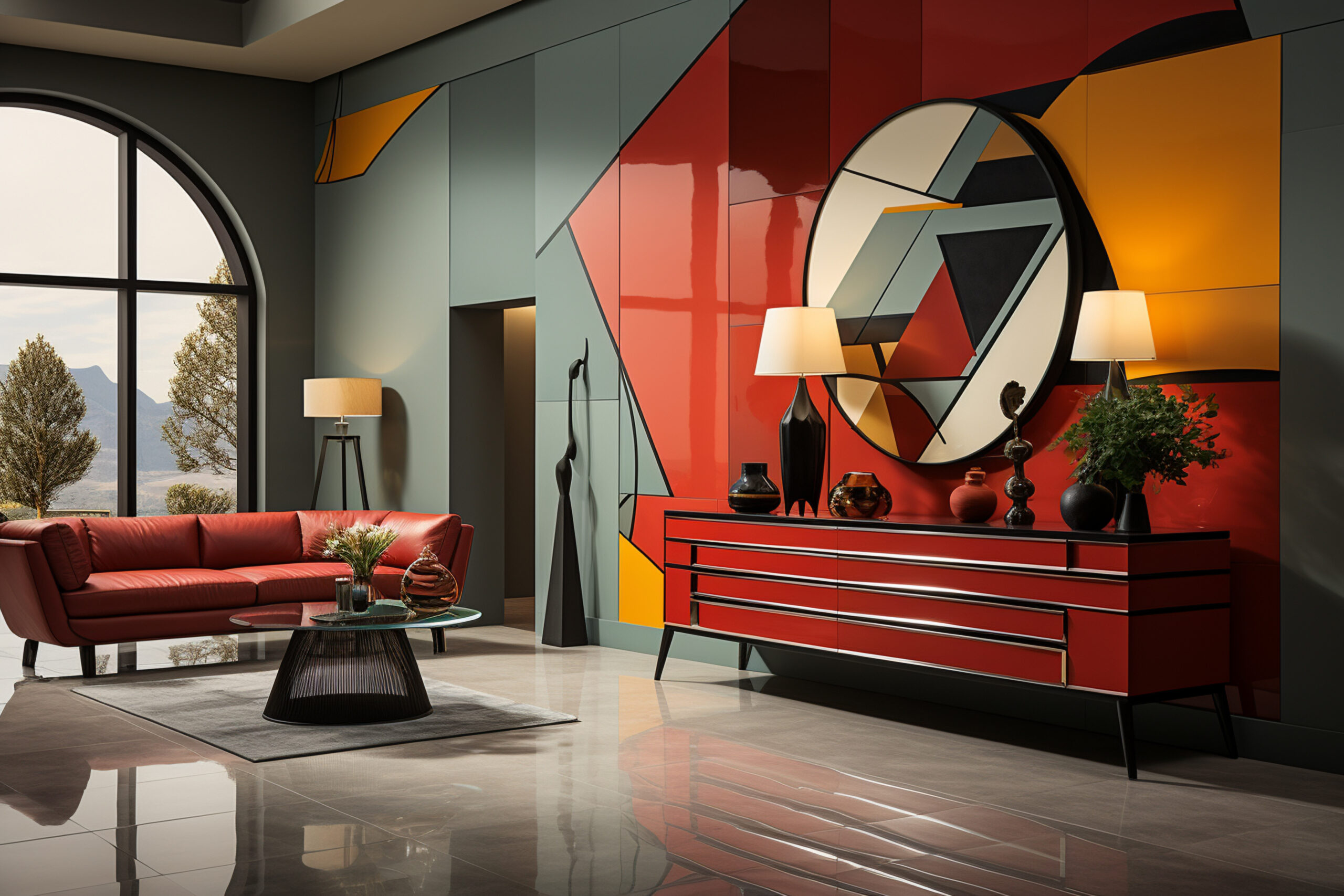Contemporary Interior Decor — Wall Treatments, Visual Expression, and Color Psychology
🪵 Wall Cladding: Function and Aesthetic Impact
Modern interior design often uses wall cladding not only to protect surfaces but also to create depth and character. Whether using wood panels, natural stone, 3D gypsum boards, or textured laminates, cladding adds layers of texture and warmth. It can also help with acoustic insulation and thermal performance, especially in urban homes. Designers may choose vertical or horizontal layouts depending on spatial goals—vertical cladding enhances height, while horizontal lines visually widen rooms. In contemporary homes, minimalist and natural finishes remain popular, aligning beauty with functionality.
🎨 Artistic Wall Finishes and Decorative Graphics
Beyond cladding, walls in modern interiors become canvases for visual storytelling. Large-scale murals, geometric patterns, metallic accents, and abstract art are often integrated directly into design schemes. This form of decoration offers a personalized and artistic touch that transforms ordinary walls into focal points. Interior decorators now combine digital prints with handcrafted elements to balance modernity and tradition. The careful placement of such features not only enhances aesthetics but also reflects the personality and values of the residents.
🌈 Color Symbolism and Material Harmony
Color remains a powerful design tool that influences mood, space perception, and cultural meaning. Earth tones like beige, taupe, and warm greys create calm, grounding interiors, while vibrant shades—like deep blue or terracotta—add energy and sophistication. Each color choice has symbolic weight: green evokes nature, blue promotes peace, and gold often represents luxury. Material selection also matters—matte textures give softness and warmth, while glossy finishes add elegance and reflection. The key to modern decor lies in achieving harmony between material quality, color depth, and emotional resonance.

